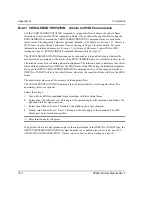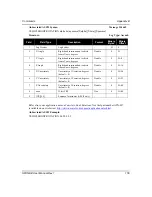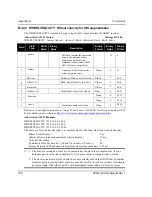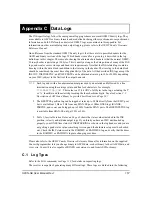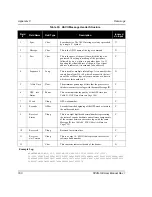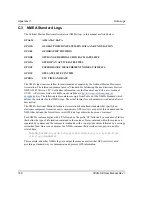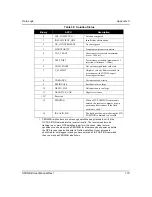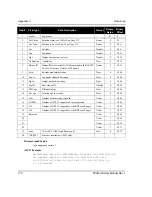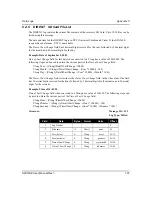
168
SPAN-SE User Manual Rev 1
Appendix C
Data Logs
C.3
NMEA Standard Logs
The National Marine Electronic Association (NMEA) logs in this manual are listed below:
GPALM
ALMANAC DATA
GPGGA
GLOBAL POSITION SYSTEM FIX DATA AND UNDULATION
GPGLL
GEOGRAPHIC POSITION
GPGRS
GPS RANGE RESIDUALS FOR EACH SATELLITE
GPGSA
GPS DOP AN ACTIVE SATELLITES
GPGST
PSEUDORANGE MEASUREMENT NOISE STATISTICS
GPGSV
GPS SATELLITES IN VIEW
GPZDA
UTC TIME AND DATE
The NMEA log structures follow format standards as adopted by the National Marine Electronics
Association. The reference document used is "Standard For Interfacing Marine Electronic Devices
NMEA 0183 Version 3.01". For further information, see the
Standards and References
section
of
GNSS+: A Reference Guide,
available on our website at
http://www.novatel.com/support/
docupdates.htm
The following table contains excerpts from Table 6 of the NMEA Standard which
defines the variables for the NMEA logs. The actual format for each parameter is indicated after its
description.
The NMEA (National Marine Electronics Association) has defined standards that specify how
electronic equipment for marine users communicate. GPS receivers are part of this standard and the
NMEA has defined the format for several GPS data logs otherwise known as 'sentences'.
Each NMEA sentence begins with a '$' followed by the prefix 'GP' followed by a sequence of letters
that define the type of information contained in the sentence. Data contained within the sentence is
separated by commas and the sentence is terminated with a two digit checksum followed by a carriage
return/line feed. Here is an example of an NMEA sentence that describes time, position, and fix
related data:
$GPGGA,134658.00,5106.9792,N,11402.3003,W,2,09,1.0,1048.47,M,
-16.27,M,08,AAAA*60
This example, and other NMEA logs, are output the same no matter what GPS receiver is used,
providing a standard way to communicate and process GPS information.

